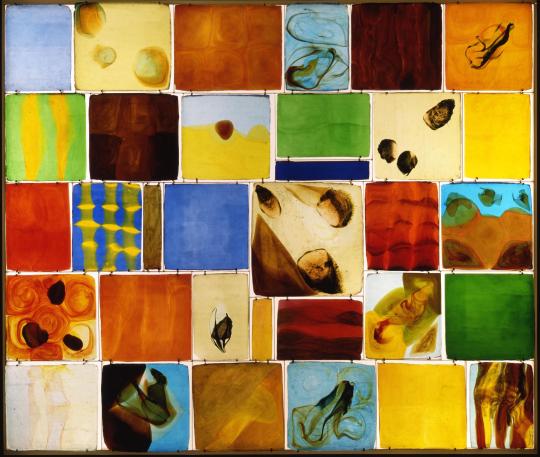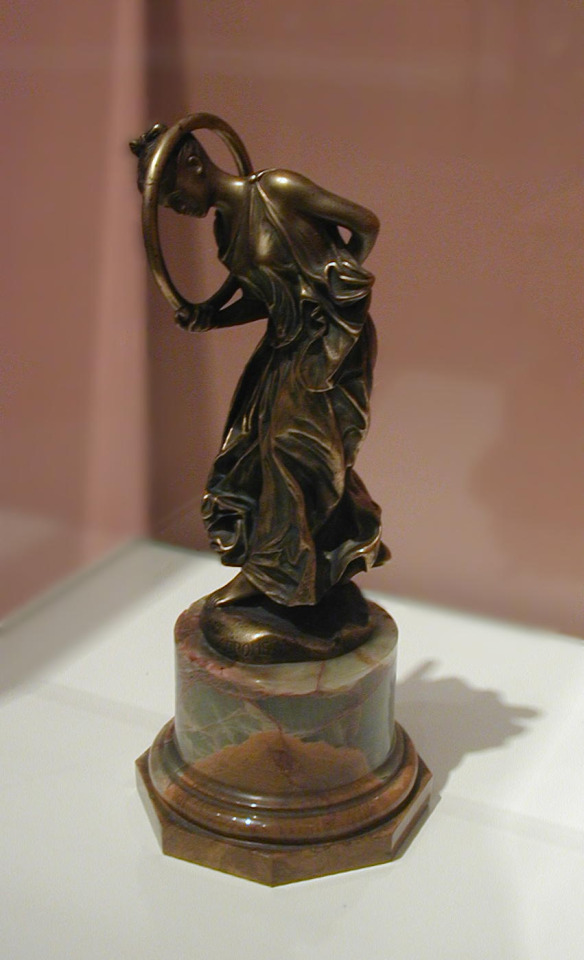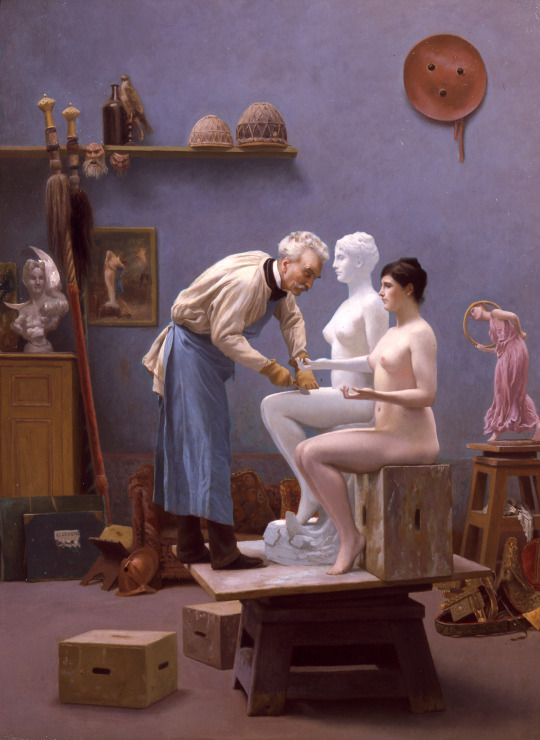#polychromatic
Text
Also re: Ao3: it's gonna be fine.
Livejournal would get DDoS'd all the damn time in the late 2000s, especially once the Russians truly took over. It was frustrating as hell but a DDoS attack is absolutely not the same as, like, getting hacked or something. You're not very likely to lose data during a DDoS attack. Fear not! (Plus the mods and admins and all are on it.)
Livejournal used to have this goat for their mascot so when it would go down for the millionth time while we were trying to RP with each other, we'd just send each other this gif on AIM:

So let's find a gif for Ao3 being down in the meantime.
56 notes
·
View notes
Text

The Tree of Life
Character for my WIP comic ✨✨
59 notes
·
View notes
Text

To quote: "Get a load of that dog."
3 notes
·
View notes
Text

Vitrana by Dominick Labino, c. 1969. Cast polychrome glass. Toledo Museum of Art.
#contemporary art#art history#art#stained glass#polychromatic#museum#art collections#modern art#abstract#abstract art#geometric art#surreal
3 notes
·
View notes
Text

A Short History of Granular Synthesis – Part 3
Alright then. Let´s do the next steps in the history of grains of sound, granular synthesis music, granular resynthesis etc.
(excerpt from my ebook “In the World Of Grains” https://www.dev.rofilm-media.net/node/332 all embedded videos are available only in the book)
The contribution to (and importance for) the further development of granular sound processing techniques and granular sound processing behaviour until today is more in developing new perspectives on musical art and on artwork with sound in general, than in refining technical or compositional tools concerning the granular level of audible goings on.
Let me name only two of the above mentioned assumptions.
Before sonic grains entered the playground frequency and time were dealt with as different things in music. In simple words the relation “frequency is pitch, and time is rhythm” had been generally accepted for centuries. Granular sound processing smashed this assumption to pieces.
The second – and perhaps even more radical change of view – concerns the relation of a composition to the sounds it uses (or is meant for).
The composers set up their parts, write their music, a music, which is written in certain forms (and even freedom of design is “form”), which then are performed using – sound. The composition and the sound belong to each other, but they are different things, different aspects of the whole piece of audible art.
Granular synthesis and granular sound processing smashed even this assumption. Using granular techniques – and before using the techniques thinking in dimensions of sonic grains – made it possible to compose sound in an even more detailed – and free – way, than it had been possible to do with pitch, key, rhythm etc. in so called classical compositions.
Composing sound instead of composing pitch and rhythm, developing sound scales instead of pitch scales etc. got into reach. And even the idea of sound, which composes itself has changed from a mere philosophical idea to a real field of research – through granular sound processing.
It´s not the goal of this brief historical overview to name all important composers, scientists, musicians and great thinkers, who contributed – and partly still do so - to the matter of grains of sound. And even if it hurts – more than a bit – not to talk about such phantastic people like e.g. Ingrid Chantal Daubechies, Walter Branchi, Simon Emmerson etc., let me say some words about only three of them at the end of this short chapter: Barry Truax, Curtis Roads and Paul Lansky.
Curtis Roads, even if contributing a lot not only to – let me call it – granular music itself, but also to the development of computer software to deal with the granular aspects of sound, he never limited himself to using only granular sound generating, granular sound processing and granular approaches to composing. His goal was rather creating and investigating music, which uses - what he called - “polychromatic timbres”. Granular techniques were just one of a bunch of ways to generate these timbres.
His education as well as his professional works are as “polychromatic” as his compositions.
It may come in handy to give a simplified explanation of the term “polychromatic timbres” at this point. The classical limitation of dividing an octave into 12 notes of a certain pitch, each of which laying apart from its neighbours by 1 semi-tone, which all classical scales can chose their notes from(e.g. C major: C-D-E-F-G-A-B), is overcome by microtonal scales, in which the differences in pitch can be less than 1 semitone. There are a whole bunch of ways (or systems) to divide octaves and other intervals, and build microtonal scales.
A (or even the?) framework of exploring these different – desirably all possible – ways of dividing is called a “polychromatic system” (of pitch).
Polychromatic timbres expand this idea from pitch to spectra and their changes in time ( = sound).
Roads uses (pre-)sampled material, taking a non-real-time approach to granular synthesis/sound design.
In his piece “nscor”, first published at the International Computer Music Conference in New York, 1980 he demonstrated what the term “polychromatic timbre” means in a real composition. Containing prerecorded sounds generated by utilizing different techniques like subtractive synthesis, additive synthesis, frequency modulation and granular synthesis, granular techniques cover only about 50 seconds (in parts of 3.5 seconds, 12 seconds and 34 seconds at 3 different moments in the piece) of the whole work, which is (in the version of 1986) 8 minutes and 58 seconds long.
In a short email conversation concerning the permission of using a part of his works in the video, which accompanies this book, Prof. Roads remarked, that his piece “Prototype” from 1975 was a better example than nscor, and sent me the most important parts – concerning the matter of early applications of granular synthesis – as a sound file, which is now part of the video (see link). I´d like to thank Prof Roads for the hint and the sound material here in this book.(the video is available only ion my e-book)
Nevertheless Roads performs all different ways to use granular sound design, which were technically possible in the 1980s. We find accumulations of layered grains, which explosively accured building bell-like sounds, that seem to be generated by frequency modulation, but trying to rebuild these sounds using only FM methods you discover, that what you are trying is a mission impossible.
There is a longer lasting granular part working with different densities, starting with a dense cloud-like bunch of grains, whose individual sounds are unidentifiable. Reducing the densitiy the individual grains, respectively their sounds, get more and more recognisable until they dissolve and go up in single sonic events like the flashes of a christmas sparkler.
Changing the spectral bandwidth of the grains´ content sets a whole world of sonic experience, which could well be called “polychromatic” itself.(see also here: https://www.dev.rofilm-media.net/node/332)
... to be continued
#grains#granular#granularsynthesis#granularsoundprocessing#sonicgrains#noise#experimental#electronicmusic#experimentalmusic#Roads#CurtisRoads#polychromatic#nscor#prototype#truax#barrytruax#lansky#paullansky
0 notes
Text
StrapOn Lesbian strap on dildo love making with blonde and brunette babes
Nathalie Hart Best Sex Scene
Public Upskirt in panties
Homemade anal seduction of teen girl
MILF Mi novia salio a comprar, mi suegra me lo chupa y grita antes que venga mi novia
gym girl on green licra pants
Big Phat Ass Blonde Sloppy BJ on her Big Tits
MIA KHALIFA DANDO A BUCETA GOSTOSA
Euro vixens Emma Leigh and Anissa Kate share a fat dick at the office
Gay sex for money Excited To Be On The Baitbus
#avoutry#enamor#unimolecularity#pref#mouldy#unpastoral#tableau's#tetraploidy#Bayside#polychromatic#arachnean#capsaicin#skewbald#Monahon#nixing#prefortune#moonbeam#mustarder#psychologics#thrill-pursuing
1 note
·
View note
Photo

Maytag Appliances neon sign, Ravenswood Event Center, Chicago, October 2022, photo by Zac Weber
0 notes
Text
TECNO to Introduce Colour Changing Polychromatic Photoisomer Technology in India
TECNO to Introduce Colour Changing Polychromatic Photoisomer Technology in India
Business Wire India TECNO, the global premium smartphone brand, announces the debut of Polychromatic Photoisomer Technology in India. The technology successfully allows the monochrome back cover of a smartphone to show multiple changing colours under illumination, giving an immersive “light chasing” experience. The globally acclaimed technology will be featured in the upcoming CAMON 19 Pro…

View On WordPress
0 notes
Text
TECNO to Introduce Colour Changing Polychromatic Photoisomer Technology in India
TECNO to Introduce Colour Changing Polychromatic Photoisomer Technology in India
Business Wire India TECNO, the global premium smartphone brand, announces the debut of Polychromatic Photoisomer Technology in India. The technology successfully allows the monochrome back cover of a smartphone to show multiple changing colours under illumination, giving an immersive “light chasing” experience. The globally acclaimed technology will be featured in the upcoming CAMON 19 Pro…

View On WordPress
0 notes
Text

I made my first post on May 3rd, as I recall. I don't know if it's more of a long, strange trip or a very strange time in my life.
#in the city that we loved#polychromatic#i miss it sometimes#i wasn't healthy at the time#which wasn't good#but i still miss it sometimes#some of you will understand
2 notes
·
View notes
Text






oodles of doodles! ft. Me casually sneaking in my oc Kogoro (5th image)
#mp100#cowardly draws#mob psycho 100#reigen arataka#shigeo kageyama#arataka reigen#mp100 fanart#dimple mp100#keiji mogami#mogami keiji#Half tempted to re-color mp100 official renders with how I color the characters when doing polychromatic art#Cowardly ocs
54 notes
·
View notes
Text
the curse is almost lifted...

kirbytober day 30: wish/dark
(pretend this isnt two weeks late hbfhsgbxjfnf)
#“the curse is almost lifted” i mean this in terms of me finishing kirbtober btw#but it also works as any interpretation of this lmao#i triedd to work a polychromatic scheme but im not sure it works well#how to do stained glass pls 🙏🙏#IM ALMOST FREE LETS GOO#12 hours well spent#kirby series#kirby#meta knight#veves ultra cool art#kirbytober#kirbytober2023#remember: november is just october 2
106 notes
·
View notes
Text

Jean-Léon Gérôme (French, 1824–1904) • Tanagra • 1890 • polychromic marble • 154.7 cm (60.9 in) • Musée d'Orsay, Paris
Much of the polychromy of Tanagra has faded, and the hoop dancer is damaged (part of the hoop and right arm are missing.)
– Wikipedia

Hoop Dancer figurine (Gérôme created several figurines of the hoop dancer that is held by the Tanagra sculpture).
Gérôme painted himself twice, sculpting Tanagra. Here is one version:

Working in Marble, or The Artist Sculpting Tanagra • 1890 • Dahesh Museum of Art, New York City
#art#sculpture#fine art#art history#pagan sphinx art blog#polychromatic marble sculpture#jean léon gérôme#french artist#late 19th century european art#ancient greek art#academic art#musée d'orsay#french academic art#tanaga#hoop dancer figurine#art blogs on tumblr
44 notes
·
View notes
Text

He looks like a coral reef threw up on him
#bursonas#ghostbur#I love drawing him in pretty things#More people should use polychromatic color schemes#Zorishy art
14 notes
·
View notes
